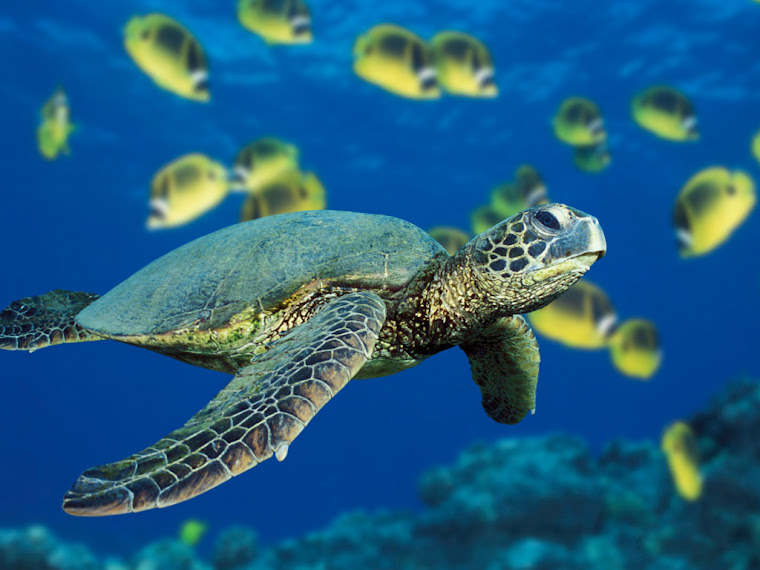As coral reefs are built, they go through different stages of growth. Throughout development, coral reefs characteristically sink into the water. Each of the following three stages describes a step the reef goes through while it sinks.
~Fringing Reefs~-->The fringing reef is the 1st stage of coral growth, being close to the island. When larvae is attached to sublittoral hard bottom and as corals grow, a fringing reef is formed along the coast. It can be found around the Caribbean Sea. Fringing reefs are close to shore so the water in which they live in gets run off and a mixture of nutrients and pollution from the land.
~Barrier Reefs~
-->Barrier reefs are the 2nd stage in coral reef development where the island has begun to sink. Corals then grow upwards and a lagoon will separate the barrier reef from land. They can be found around Australia, such as the Great Barrier Reef. They are farther out so they have access to water from the lagoon and the deeper ocean.
~Atolls~ -->Atolls are the last geological stage of sinking volcanic island. They are circles of corals with a lagoon in the center. In this stage, island has been completely been submersed in water. Its submersion explains why there is a lagoon in the center. Hundreds of atolls are speckled across the South Pacific.
The sun is the source of energy for the coral reef ecosystem. Plant plankton, called phytoplankton; algae; and other plants convert light energy into chemical energy through photosynthesis. As animals eat the plants and other animals, energy is passed on through the food chain. Reef building corals work together with microscopic algae, called zooxanthellae, that lives in their tissue. The zooxanthellae provide oxygen and food to the coral through photosynthesis. The coral polyp gives the algae a home, and the carbon dioxide it needs through respiration. Besides zooxanthellae, algae and seagrasses are the main types of plants in the coral reef ecosystem. These plants give food and oxygen to the animals that live on the reef. Seagrasses are especially important because they provide shelter for juvenile reef animals like conch and lobster.Coral reefs only make up about 1% of the ocean floor, but they house nearly 25% of life in the ocean. Animals use coral reefs either as a stopping point, like an oasis, as they travel the deep blue sea, or they live as residents at the reef. The corals themselves are the most abundant animal on the reef. They are tiny organisms are called polyps, that attach themselves to the hard reef and live there forever. The reef is like a giant apartment building in New York City and the coral polyps live together in each apartment. Corals are closely related to sea anemones and sea jellies, and use their tentacles for defense and to capture their prey. Corals can be a variety of colors, white, red, pink, green, blue, orange and purple, due to natural pigments and the zooxanthellae in their tissues.Other animals that live on the coral reef include sea urchins, sponges, sea stars, worms, fish, sharks, rays, lobster, shrimp, octopus, snails and many more. Many of these animals work together as a team like the coral polyp and zooxanthellae. This teamwork is called symbiosis. One example of symbiosis on the reef is the anemonefish and sea anemone. The sea anemone’s tentacles provide protection and safety for the fish and their eggs, while the fish protects the anemone from predators, such as butterflyfish. Sometimes anemonefish even remove parasites from their home anemone. http://www.jochemnet.de/fiu/OCB3043_39.htmlhttp://library.thinkquest.org/25713/reef_types.html#fringinghttp://www.nceas.ucsb.edu/nceas-web/kids/biomes/coral.htm
Subscribe to:
Post Comments (Atom)


No comments:
Post a Comment